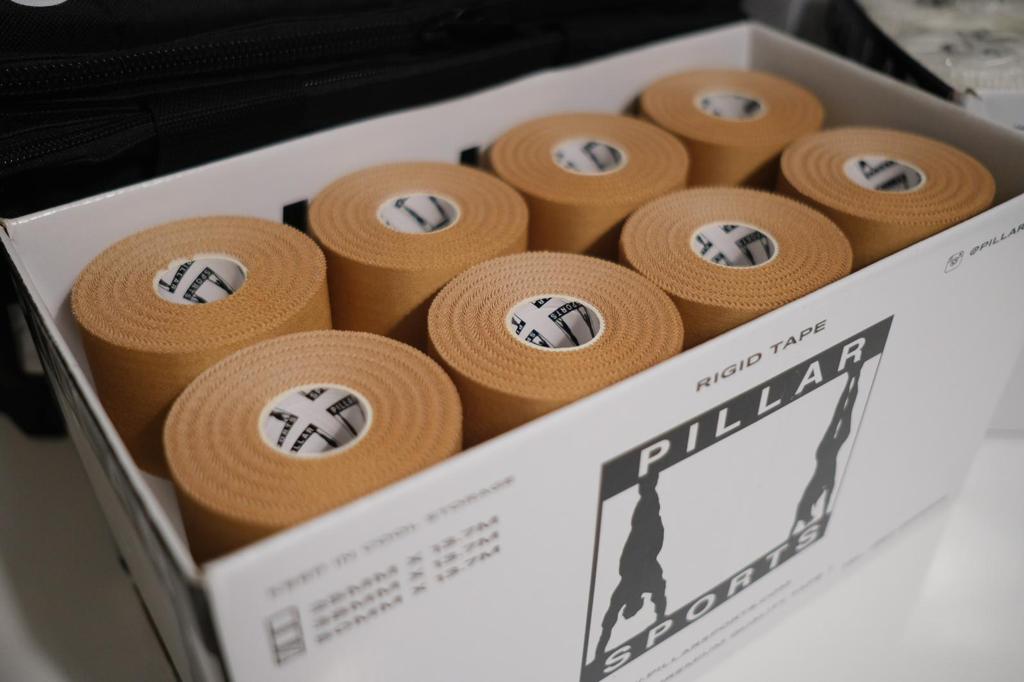
Please be very aware that this information is neither intended nor implied to be a substitute for professional medical advice. Always seek the advice of your doctor or other qualified health professional before starting any new treatment or with any questions you may have regarding a medical condition.
Strapping and taping is one of the oldest methods to prevent sprains, support joints, and reduce pain and swelling in sports. There are two effective ways of strapping; Protect and treat an existing injury and Prevent further injury by supporting the joints and ligaments.
Athletes from many sports consider taping to be important in the acute and chronic phases of an ankle injury. An ankle sprain can be explained as a partial or complete break of the ligament fibers of the ankle joint. Lateral ankle sprains are particularly common in sports such as football, volleyball, basketball, running, dance, and ballet.
The key to the successful management of ankle sprains in sports is prevention. To administer a preventive measure, placing sports strapping tapes on the affected area is one of those preventative measures.
There are several benefits of placing sports tapes on ankle sprains. The following are some of them:
1. Providing biomechanical stability to the ankle.
It has been shown that taping is effective in restricting ankle movement before an exercise session, but after exercise, taping can only limit extremes of range of motion (ROM) or limit the movement of the part of the body that can be moved around a joint or a fixed point.
2. Reduce both the incidence and the severity of ankle sprain injuries.
The reduction is generally greater for athletes with a history of ankle sprain, although positive effects have also been shown for those with no prior injury. The main reason for this is probably on the basis of improved proprioceptive function throughout the exercise session, rather than mechanical support, which diminishes throughout the exercise session.
3. Ankle taping allowed the peronii muscle group to contract for a longer period of time at the pre-heel strike stage in four mechanically unstable ankles.
The more unstable the ankle, the greater the improvement. As well as the peronii muscle group, deficits can also be shown in tests for proprioception, such as passive joint angle reproduction.

4. Both mechanical and functional stability of the ankle can be improved with taping.
The restrictive effect is lost after short bouts of exercise, which indicates that the mechanical restriction of movement may be less important than the neuromuscular and sensory mechanisms.
5. Taping does not affect a number of performance parameters.
These include muscle strength, reaction time, fine motor coordination of the foot, and submaximal endurance.
It is concluded that applying tapes like Pillar Sports Rigid, White Rigid Tape on a sprained ankle may provide some protective benefit to prevent further injuries, thus helping it to recuperate faster without affecting the performance.

Protect. Prevent. Perform.
#strappedandready #pillarsports #sportstape #strapping #sportsblog #bloggerslifestyle #pillarsportsblog #pslfamily #kinesio #kinesiologytape #taping #hongkong #international #anklesprains #tapebenefits
References:
Schwellnus, M.* & Derman, W. (2006). Strapping and taping in sports medicine. Journal of Modern Pharmacy, 13(1), 32.
Callaghan, M. J. (1997). Role of ankle taping and bracing in the athlete. British journal of sports medicine, 31(2), 102-108.
Stoffel, K. K., Nicholls, R. L., Winata, A. R., Dempsey, A. R., Boyle, J. J., & Lloyd, D. G. (2010). Effect of ankle taping on knee and ankle joint biomechanics in sporting tasks. Med Sci Sports Exerc, 42(11), 2089-2097.
This site is protected by reCAPTCHA and the Google Privacy Policy and Terms of Service apply.

Grab HK$20 OFF your first order of performance-tested tape & gear.
*when you spend HK$300 or more.*
Join 1,000+ athletes already training with Pillar Sports tape.
No spam. Unsubscribe anytime.